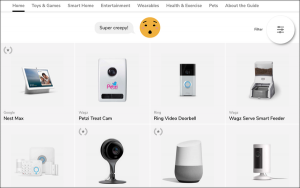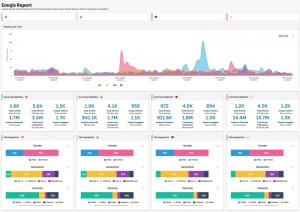Its no longer enough to simply create a strong product. Brands today must also create amazing customer experiences – both on and offline. How a customer engages with your company across every touchpoint impacts their overall view of your brand. You might offer an amazing in-store experience filled with personalized attention and unique branded details, but if your website is slow to load and hard to navigate, potential customers will inevitably be turned off by your overall brand experience. User experience is defined as the overall experience of a person using a product, such as a website or computer application, especially in terms of how easy or pleasing it is to use. While traditional UX descriptions deal primarily with digital environments, as the line between digital and physical becomes increasingly blurred, brands must also incorporate UX strategy for in-person touch points in tandem with online touch points.
Every contemporary brand has a user experience – if they didn’t have a UX of some shape or form they wouldn’t be able engage with customers at all. However, some brands offer better experiences than others. We’ve all visited brand websites that have left us scratching our heads: sometimes the story the brand tells doesn’t make sense, other times the navigation is hard to follow, and some just aren’t optimized for mobile viewing. When consumers visit sites that don’t cater to their needs and expectations, the natural inclination is to move on and never return. Consumers today are busy; they don’t have time to dig through brand sites and social profiles, and they also don’t need to expend that time because there is an array of other options and competitors waiting to engage with them. To ensure delivery of an engaging and holistic brand experience, brands must invest in solid research initiatives, and extend these findings to offline and social engagement touch points.
Get To Know Your Customers
The foundation of all UX initiatives is first understanding your target users. After all, how can you build a sound product for an audience without really knowing what the audience wants? Too often company leaders assume they know what an audience is looking for in an experience based on what the internal team values, but that is not always the case. Let’s say you’re building an ecommerce website targeting Gen-Z females, but your team is primarily comprised on Gen X-Ers and Boomers. Your team’s mobile behaviors and ecommerce expectations are vastly different than your target audiences’ based on generational differences. The only way to build a product that resonates with new demographics is to infiltrate the mindsets of those demographics. The Nielsen Norman Group calls on three distinct research methodologies during the UX process: Attitudinal vs. behavioral, Qualitative vs. Quantitative, and Context of Use. All three of these specific approaches to user research can be achieved through surveys, focus groups, website heat tracking, A/B testing, and ever diary camera studies. One research exercise will not elicit sufficient results on its own; for a brand to truly understand its audience it must be willing to conduct varied and ongoing tests.
Take Your Experience Offline
Part of the user research process is devoted to understanding the natural path to purchase customers take when they arrive on a website. Do they start at the home page and visit the About section first? Or, rather, do they skip over the About section entirely and head straight to the company’s product collections? Through user research, brands are better able to understand the natural inclinations of their general audience members, and subsequently add features, copy, and call-to-action buttons to further emphasize this path. Acne Studios sought to apply this ‘path’ in an offline context. So often when customers enter a store they amble without a plan or sense of direction; Acne, however, forces in-store customers on to a specific path, and therefore exercises more control in the overarching in-store experience. Throughout its labyrinth-like layout, customers are directed through a series of encounters with individual pieces, allowing users to take in items one-by-one. The layout creates a highly individualized shopping experience that gives customers more time and space to appreciate and consider each piece at face value.
Get Social With Your Users
Just as UX is often strictly related to website or application design rather than in-person experiences, many UX designers also leave social user experiences out of the mix. Perhaps this overlook occurs because social channels are not owned by brands, and therefore UX teams cannot re-configure specific structures and elements. But social UX hacking can be an immensely powerful branding tool. For example, one way that brands hack Instagram is through Instagram’s grid-like views. While the platform was originally conceptualized on an individual post basis, brands, like Ikea, figured out pretty early on that they could tell a powerful collective story by posting specific pictures in succession to create one cohesive narrative on their homepage grids.
Today’s consumers move back and forth between on and offline environments seamlessly, and it’s imperative that brands deliver experiences that cater to this behavior. The exciting and challenging aspect of user experience is that it is always changing – it has to; if a brand fails to adapt with shifting customer behaviors and interests, they risk total irrelevancy.
Digital & Social Articles on Business 2 Community(62)





